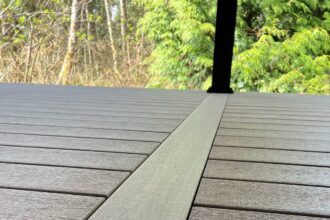Many people want more space in their homes and would ideally relocate if they could, but the cost of moving and the current economic climate make this prohibitive. As such, many people are renovating their homes to give them the space and features they desire, which can be significantly cheaper than moving home. If budget is an issue for you, consider doing most of the work yourself, which is a cost-effective way of transforming your home. However, you will need to do extensive planning before starting your project. Below, you can see some tips to help you get started.
Decide What You Want To Do
The first thing you will need to do is determine what changes you are going to make to your home and ensure the project is within your skill set. There are many things you can consider, such as building an extension, removing interior walls, building a conservatory, or setting up a summer house in your garden, to name but a few. Decide what will benefit you and your family most, and then you can start planning accordingly.
Setting Yourself A Budget
The next step of your project will be to determine your budget, and you must ensure that you set a realistic one that matches the ambition of your project. You must ensure that your budget can accommodate everything your project needs, including the materials, equipment hire, and paying for any contractors you will need. You also need to set aside a contingency that will help you cover any unexpected expenses which are common with building projects. Once you have your budget set, you can then start planning the work you will do.
Planning The Work
Depending on the type of project you will undertake, it can be daunting when you start to plan it with so many things to consider. The best way to start is to break the project into stages, simplifying the planning stage. You can click here to see some excellent tips on planning your DIY project that you may find useful and can employ when in the planning stage of your project. Once you have everything on paper, you can start listing all the tools, materials, and equipment your project will require.
Making A List Of Supplies
The next thing you will need to do is list everything you will need to complete your project. You want to have two separate lists, one with the materials you must buy, such as drylining supplies and decorating supplies, ensuring you make allowances for wastage. You will also need a list of the tools and equipment you need. You can go through the different stages of your project listing everything that you will need, and once you have done this for all the stages, you will have complete lists of everything required. Now, you can start looking for everything you need and shop around to get the best deal possible.
Sourcing The Tools & Equipment
If you are lucky, you may already have items on the list of tools and equipment you need, so you do not need to source them. However, if there are items you do not have, you must decide the best way to get them so you can complete your project. If you choose to buy the items, it will significantly increase your project’s overall cost, which may be unaffordable for you. An excellent alternative is to hire the tools and equipment you need. You will only have to pay for the days you use them, and you can return them once you finish using them. Another option is borrowing the tools and equipment if you know people who already have them.
Sourcing The Materials
You will also need to source the materials your project requires, and you will need to pay for these, so you want to shop around to ensure you get the best deal. There are many online retailers where you can find what you need, but when working out the prices, ensure that you also incorporate delivery costs, which can significantly increase the overall expense. You will sometimes find that the different items you need are cheaper in different stores, but if you hunt for the cheapest item, factoring in the delivery charges makes it counter-productive. Once you have everything you need to finish your project, the last thing you need to do before starting is to brush up on your DIY skills.
Brushing Up On Your DIY Skills
The final thing you want to do before starting your home DIY project is to brush up on your skills and watch videos of the tasks you will be doing. Many places, such as YouTube, offer suitable videos, and you can gain some excellent tips to help you. Once you are confident that you can do the jobs to a high enough standard, you can start transforming your house and turning it into the home of your dreams.














